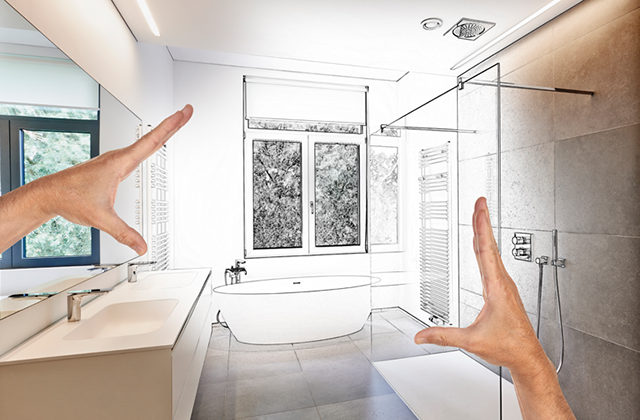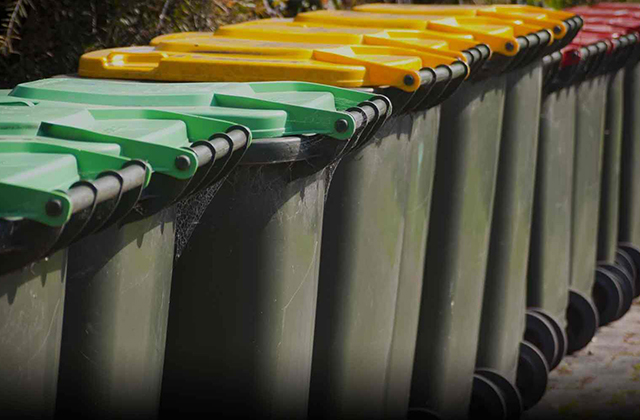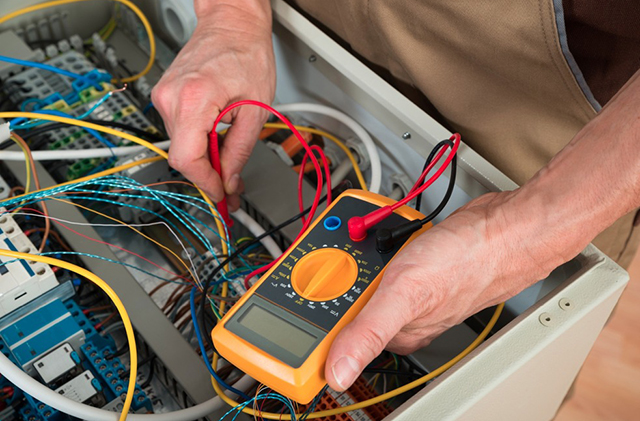Bathrooms are one of the largest investments in a home when building or renovating and designed well will add much more than their equivalent value. Here are 5 key steps to ensure you maximize your return on your investment:
1. Form Follows Function
Equal consideration needs to be given to what you would like your bathroom to do functionally, as well as how you would like it to look, as a good design outcome must exhibit both creativity and functionality. However, starting the process by writing yourself a checklist of all your functional requirements is the best way to start, as there is always many design solutions but if locked in too early, may compromise functionality. For example what do you need to store, what grooming appliances do you use, how many people use the bathroom at the same time? There is no point spending money on a beautiful new bathroom if you still have the same old storage problems, so give some thought to your projects requirements before moving onto your aesthetics.
2.Planning Your Layout
Once you have a checklist of your functional requirements and some conceptual ideas, start to begin planning your layout. Bathrooms need to be very well planned, as there is a lot going on in a relatively small footprint. So before you rush out to purchase a freestanding bath that you have fallen in love with, you need to survey your available space to determine what will fit (especially if you are considering installing a bath!). So start with a quick survey of your available space and block it out with the approximate sizes of each item from your checklist and minimum circulation clearances you require for each of these elements. It does not matter how pretty it is, but make sure it is to scale!
3.Planning Your Services
Planning of your services is a very important part of the design process, if you wish for your bathroom to be built on-time and within budget early provision is the key factor. Service inclusions are elements such as ventilation, heating, lighting and electrical. The location and specification of these elements must be well documented. Some key points to consider:
– Natural & Mechanical Ventilation: Ideally your bathroom will have both natural and mechanical ventilation, to assist with eliminating moisture build-up. Try to give your bathroom that extra designer touch with a great view for natural ventilation but keep mechanical ventilation discreet.
– Under-floor Heating & Heated Towel Rails: Under-floor heating costs today are quite minimal and in addition to being a discreet form of heating, can also assist with preventing moisture build-up. The up front costs for good ventilation and heating far outweigh the detrimental effects on your health and longevity of your bathroom that moisture build-up, water damage and mould growth can create without it. Heated towel rails are very popular in bathrooms today and require hard wiring, which requires special provision.
– Natural & Artificial Lighting: Ideally your bathroom will have ample natural and artificial lighting. Make provision for both task and ambient artificial lighting, as it makes a huge difference on the appearance and mood of your bathroom. Install a skylight if natural lighting is inadequate, to make the most of natural lighting during daylight hours.
– Power points: Power points in bathrooms should be discreet and must be located away from water sources and comply with relevant Building Codes.
4.Material and Fixtures Selection
In order for your project to now take shape, it’s time to start selecting your materials and fixtures which for most people is the fun part. When considering how much to invest in your bathroom fixtures, make sure they are of a standard that would be expected of any future purchasers, a cheaper alternative may not be the best long-term investment for your properties re-sale value or your bathroom’s longevity. Similarly, make sure that your tiles are of a good quality, as they will be your most dominant visual element in your bathroom and also serve as a water barrier so need to be durable. Try to keep the theme of both your materials and fixtures complimentary with each other.
5.Project Documentation
The final stage is to compile all of your information together into the necessary documentation ready for construction. This stage clearly defines how your design actually works when all of the elements are put together and how it is to be constructed. Your final project documentation should include all of the following:
1.Fixtures, Finishes and Electrical Schedule: A description of materials, finishes, fittings and fixtures to be used.
2.Construction Drawings: Describes all of the building works to a scale of 1:25 or 1:20 of your floor plan, all elevations and cross sections. Includes lighting and electrical layout, joinery details and tiling layouts.
3.Building Contract: Always sign a contract and ask for your Schedule and Drawings to form part of your contract. This may prove very valuable should any disputes arise between yourself and your builder.
This final step can mean the difference between getting what you want and your builder’s interpretation. Also, by preparing the first two parts of your project documentation, you can obtain accurate building tenders and not be hit up for any hidden costs.
Good luck with your new bathroom, I hope you found this information of assistance and I welcome your thoughts and comments.
Natalie McDonald is a qualified Interior Architecture design professional and business owner of Look Interior Design based in Sydney, Australia. For more useful information and examples of her work visit her website at http://www.lookinterior.com.au
Article Source: http://EzineArticles.com/6440557



